 Shakira was onto something when she said, “My hips don’t lie.” Poor hip strength and mobility can lead to negative effects like lower back pain, poor posture, knee pain, and impaired balance, which is why improving hip health is crucial. But how can you build hip strength and mobility without a hip adductor and abductor machine? Read on to discover effective exercises to enhance hip strength!
Shakira was onto something when she said, “My hips don’t lie.” Poor hip strength and mobility can lead to negative effects like lower back pain, poor posture, knee pain, and impaired balance, which is why improving hip health is crucial. But how can you build hip strength and mobility without a hip adductor and abductor machine? Read on to discover effective exercises to enhance hip strength!
Side-Lying Leg Lifts: Lie on your side with legs straight, slowly lift your top leg to about 45 degrees, then lower it back down. Repeat 10x, then switch sides. For added resistance, wrap a mini band around your ankles, and hold... increasing tension over time.
Banded Hip Bridge Adductor: Lie on your back with knees bent and a mini resistance band around the top of your knees. Lift your hips off the ground with knees together, then separate your knees against the band’s resistance, and control them as you bring them back together. Repeat 10x.
Clamshells: Lie on your side with knees bent at a 90-degree angle and feet together. Keeping feet together, lift your top knee as high as possible while keeping your pelvis stable, then slowly lower your knee back down. Repeat 10x, then switch sides. For added resistance, wrap a mini band around the lower portion of your thighs.
Lateral Band Walks: Place a mini resistance band around your ankles, slightly bend your knees, take a lateral step to the side, and let the opposite foot meet it. Repeat 10 times each way.
These exercises effectively strengthen your hips while engaging your core and stability muscles, offering a greater range of motion compared to the hip adductor/abductor machine. Incorporate these functional hip adductor and adductor exercises into your routine to reduce symptoms of weak or immobile hips, leaving you feeling more stable and mobile!
For personalized guidance and support, the trainers at the National Institute for Fitness and Sport (NIFS) are here to help. They can create a fitness plan tailored specifically to your needs, ensuring you stay strong and prevent injury. Whether you want to improve hip strength or overall fitness, NIFS trainers will support you every step of the way. Check out our offerings by clicking below.


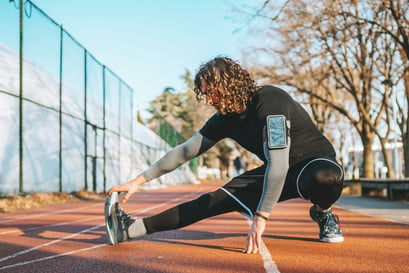 Everyone needs strong hips. Athletes need them to perform a wide variety of movements within a given sport. Aging adults need them to help reduce the risk of falls. When we think about the hip, most people think about the glutes and abductors. You can look in any gym and see a handful of people with a band around their knees performing a plethora of movements working the glutes and abductors. However, the most neglected muscle is the one on the inside of the thigh: the adductor.
Everyone needs strong hips. Athletes need them to perform a wide variety of movements within a given sport. Aging adults need them to help reduce the risk of falls. When we think about the hip, most people think about the glutes and abductors. You can look in any gym and see a handful of people with a band around their knees performing a plethora of movements working the glutes and abductors. However, the most neglected muscle is the one on the inside of the thigh: the adductor. 
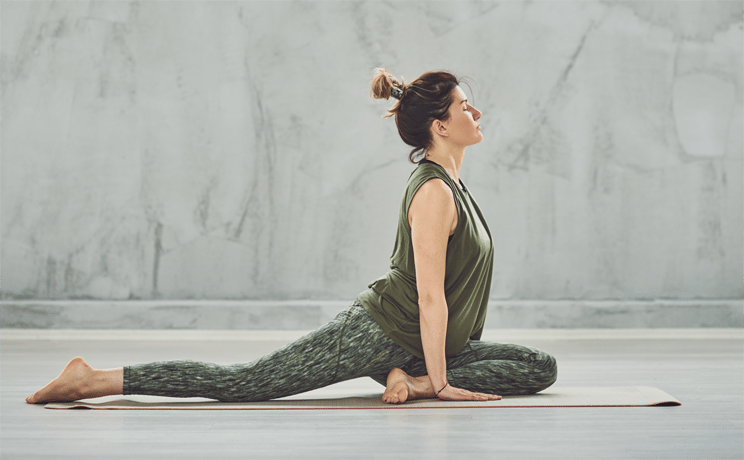 Whether you’re a competitive athlete, a weekend warrior, or the casual gym-goer, addressing mobility concerns can go a long way toward performance enhancement and injury prevention. If a joint is unable to move through a complete range of motion unloaded, then it’s going to be “bad news bears” when it comes to putting that same joint under any external load. Eventually, limited mobility could lead to muscular imbalances and compensation patterns, which could ultimately lead to the onset of injury. In other words, you can’t look to build strength on top of dysfunction.
Whether you’re a competitive athlete, a weekend warrior, or the casual gym-goer, addressing mobility concerns can go a long way toward performance enhancement and injury prevention. If a joint is unable to move through a complete range of motion unloaded, then it’s going to be “bad news bears” when it comes to putting that same joint under any external load. Eventually, limited mobility could lead to muscular imbalances and compensation patterns, which could ultimately lead to the onset of injury. In other words, you can’t look to build strength on top of dysfunction. 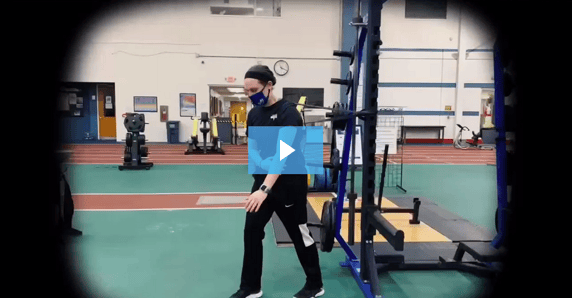

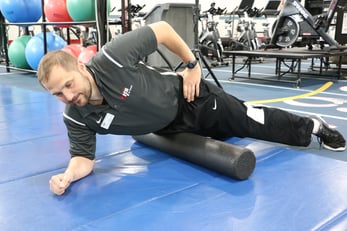 Most workout formulas include a warmup process. If hip mobility is a focus, your workout would benefit from a few additions to the routine. Foam rolling, which has been around for a while, is a great way to get blood circulating to the muscles and decrease soreness (if you worked them out prior). Spending a few minutes to roll out the trigger spots (areas of higher tenderness) will help you feel better, and you will be able to exercise on a more consistent basis.
Most workout formulas include a warmup process. If hip mobility is a focus, your workout would benefit from a few additions to the routine. Foam rolling, which has been around for a while, is a great way to get blood circulating to the muscles and decrease soreness (if you worked them out prior). Spending a few minutes to roll out the trigger spots (areas of higher tenderness) will help you feel better, and you will be able to exercise on a more consistent basis.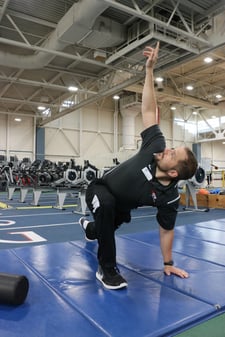 Second, I would suggest a dynamic movement stretch (rather than traditional static stretching) to help not only stretch the muscle, but also warm up the body for more movement. “The
Second, I would suggest a dynamic movement stretch (rather than traditional static stretching) to help not only stretch the muscle, but also warm up the body for more movement. “The 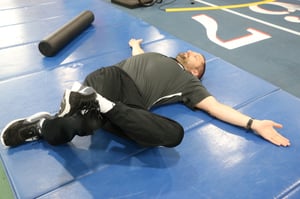 Finally, another great stretch to do is simply called a
Finally, another great stretch to do is simply called a